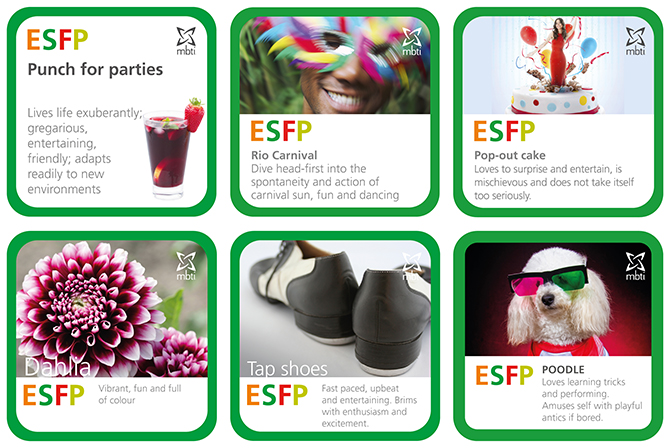More to Fun Type Tables than meets the eye
Betsy Kendall, COO and Head of Professional Services, OPP
I hope you have been enjoying the Fun Type Tables (FTTs) that OPP has released over the last year or so, including our latest celebrating the world's largest dog show, Crufts. The first FTT I created, “What’s your Type Tipple?” has been the most popular in terms of downloads so far (even though the word ‘tipple’ confused some readers outside the UK) but the shoes, cakes, vacations, and even the seasonal Santa and Movember moustache FTTs have also been amazingly popular.
There is both a light hearted and a more serious purpose to these FTTs. Learning about MBTI Type is enjoyable: just listen to the laughter when a team is first introduced to the preferences. There is comedy in the everyday misunderstandings between Types and relief at having a positive language to talk constructively about diversity and make Type differences work for the team rather than against it. OPP’s FTTs unashamedly aim to raise a smile, and some practitioners send examples to teams they have worked with, to lightly remind them to keep Type in mind. Just yesterday I spoke to a practitioner who used the MBTI framework with a leader in a coaching session, and the next day the leader showed her all the great stuff he’d found on the internet about Type – and our FTTs featured.
One of the reasons that I starting putting these together was seeing that others were doing this sort of thing... and sometimes not very well, either not bothering to really think about what makes each Type tick or being rather cruel about some Types. My own Type, INTJ, tends to come off badly in poorly constructed tables, often cast as the sinister villain.
In each of OPP’s FTTs, my colleagues and I have done our best to construct text that accompanies each shoe, cake, dog breed or moustache to capture something of the essence of the Type, and not in a cruel way. We have used knowledge of how the preferences interact dynamically and particularly the impact of the most consciously used function for each Type. It is perhaps easiest to see when looking at one Type across several FTTs.

For instance, for INTJ the core driver is to quietly explore and connect ideas internally (Introverted iNtuition). We are known for our analytical approach, our depth of understanding and we like time alone to discern patterns and meanings in the world. We sometime just ‘know’ how to shift the paradigm, to fundamentally change the way something is being thought about to bring benefit. Externally we use our second favourite function, logical Thinking, to reshape the world to bring into being our insights. Others tell us we can come across as calm, self sufficient and yes we can strike others as aloof.
Contrast these with my husband’s Type, who just happens to have the opposite preferences to mine.

ESFP’s core driver is to live in the here and now, seeking the stimulation of a never-ending stream of new experiences. ESFP’s have a zest for life and are often known for being entertaining, spontaneous and playful. They are resourceful, adaptable and practise the art of the possible: making the most of what there is, not what might be.
Whilst at one level the FTT’s are most certainly frivolous, at their heart they give glimpses of the deeper dynamics of each Type. The FTTs are intended to keep people talking about Type and thinking about the value of diversity of gifts in the 16 MBTI Types.
If your interest is piqued then take a look at more FTTs and download and share your favourite tiles. We will continue to develop new FTTs and we’re keen to involve the MBTI community in creating some of them. Keep an eye on the OPP LinkedIn page to get involved in future FTTs.